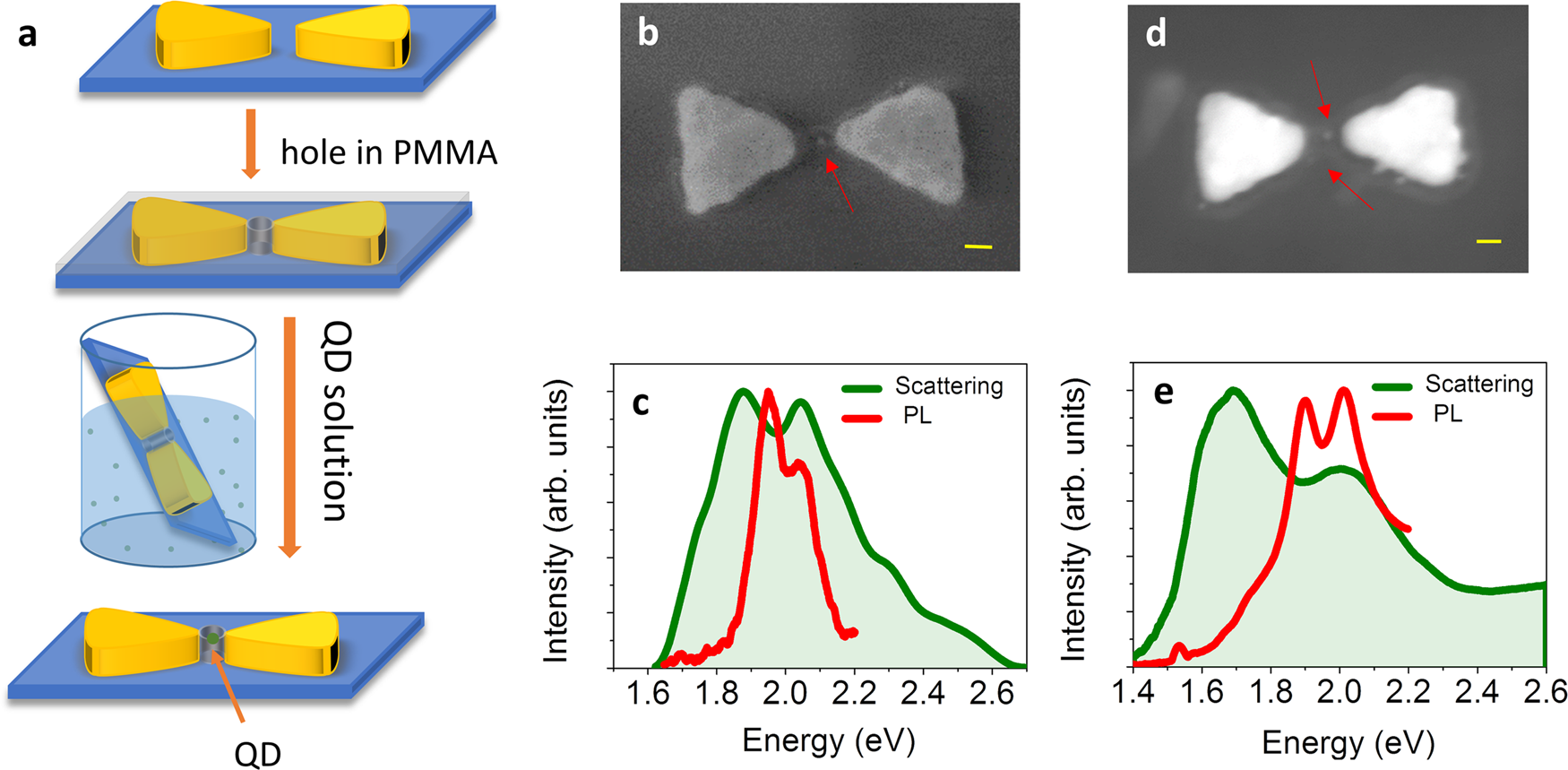The unexpectedly rich excited-state dynamics of quantum dots in plasmonic cavities
Plasmonic cavities formed by metallic surfaces are nanostructures that confine light to dimensions far smaller than the free-space wavelength, as they mix optical fields with electronic excitations. It was not until the 1990s, with the appearance of accurate and reliable nanofabrication techniques, that plasmonics blossomed. It was found then that local fields around nanostructures could be directly measured by near-field scanning optical microscopy. Plasmonic nanostructures gained rapid appreciation as routes to optical devices unconstrained by the wavelength of light, yielding viable nanophotonic devices.
Manipulating and controlling the interaction of photons with individual quantum emitters has been a major goal of quantum photonics recently. Such control can be realized by engineering the local photonic environment of the quantum emitter, e.g. by placing it inside an optical cavity. By coupling the excited state(s) of the emitter to the electromagnetic field of the cavity, various exotic light-matter coupled states, single-photon emission sources and photonic switches can be generated.
The ability to strongly couple quantum emitters to individual plasmonic cavities has aroused much excitement in recent years. Plasmonic cavities with coupled quantum emitters may serve as new test-beds for studies of quantum optical and chemical dynamics under ambient conditions. It has been shown repeatedly that such a strong coupling can be realized even in the limit of a single molecule or a quantum dot. A quantum dot being a nanometric crystalline structure of semiconductor materials. In a quantum dot, electrons are confined in a region of space, thus creating a well-defined structure of energy levels that depends very much on the size and shape of the quantum dot. This structure resembles that of atoms, that is why sometimes quantum dots are also called artificial atoms.

Now, a team of researchers reports 1 an extensive set of measurements of plasmonic cavities hosting one to a few semiconductor quantum dots.
The researchers use an intensity interferometer based on the HBT effect to expose the remarkable modulation of the excited-state dynamics of quantum dots embedded within plasmonic cavities through the comparative analysis of an extensive set of light scattering and photoluminescence measurements. They observe non-classical emission from one to three quantum dots within their devices, and find surprisingly long excited-state relaxation times.
The scientists interpret the experimental results using simulations based on a model that considers the coexistence of bright and dark excited states in the quantum dot with very different coupling properties. They show the crucial role that the dark state of the quantum dots plays in the observed dynamics, and thus in the shaping of the final photoluminescence spectrum.
The findings reveal an unexpectedly rich excited-state dynamics induced by coupling of a small number of quantum emitters to a plasmonic cavity. The ability to access and eventually control this complex dynamics of excited states in light emitters can pave the way for manipulation of electronic excitations at room temperature in strongly coupled devices. This is a necessary first step for future applications, such as the construction of quantum devices operating under ambient conditions and the modulation of chemical reactivity at the single-molecule level.
Author: César Tomé López is a science writer and the editor of Mapping Ignorance
Disclaimer: Parts of this article may be copied verbatim or almost verbatim from the referenced research paper/s.
References
- Gupta, S.N., Bitton, O., Neuman, T., Esteban, R., Chuntonov L., Aizpurua J. & Haran G. (2021) Complex plasmon-exciton dynamics revealed through quantum dot light emission in a nanocavity. Nat Commun doi: 10.1038/s41467-021-21539-z ↩